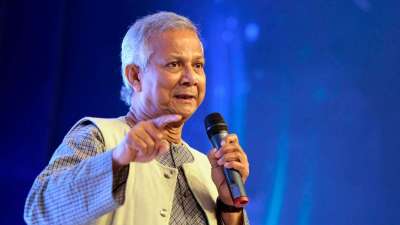In a worrisome development for India, China has fast-tracked the delivery of its advanced fifth-generation stealth jets, the J-35A, to Pakistan. According to media reports, the first batch of 30 such jets is expected to be delivered to Pakistan by August 2025. In a significant display of military cooperation, China has agreed to offer these fighter jets to Pakistan at 50% discount and on lenient payment terms.
This 50% discount “reward” has been given to Pakistan for what Beijing calls Pakistan’s “successful air defence performance against India”. Notably, this development comes following the recent conflict between India and Pakistan.
In the later part of 2025, reports indicated that Pakistan may acquire 40 J-35A fighter jets, marking China’s first known export of such advanced military technology. Earlier, these stealth jets were originally scheduled to be delivered in late 2026. Since India and Pakistan agreed to the ceasefire understanding, several high-profile meetings between Chinese and Pakistani officials and ministers have taken place.
Currently, Pakistan’s Foreign Minister and Deputy Prime Minister Ishaq Dar is on a visit to China. He has reportedly finalized the logistics and financing details of the J-35 fighter jet deal during meetings with Chinese officials. Moreover, reports suggest that a batch of Pakistani pilots has been sent to People’s Liberation Army Air Force headquarters in Beijing to get operational training on the J-35A platform.
Recently, Beijing expressed support for Pakistan’s defence of its “national sovereignty and territorial integrity”.
What Are Stealth Jets?
Stealth technology functions as a method that reduces radar, sonar, infrared, and other detection distances for objects. The technology is alternatively identified as LO technology (Low Observable Technology). Normal combat aircraft are becoming increasingly detectable by radar. Once locked by the enemy’s radar, a missile from their defence system is automatically launched, which destroys the aircraft. The biggest advantage of stealth technology is that it is undetectable by radar.
Stealth aircraft cleverly manage their thermal emissions, ensuring that radar systems can’t detect them. These fighter jets carefully control their altitude, avoiding any sudden changes in height that could trigger radar detection. Having stealth fighter jets is crucial for any defence unit in today’s world.
What Challenge Is Posed For India?
Pakistan’s acquisition of stealth jets could pose a major challenge for India. India currently does not have stealth jets. India is modernizing its air force with platforms like the Russian Su-30MKI and French Rafale jets. However, none of these have the capabilities possessed by stealth jets like the J-35A.
India is indeed developing its first indigenously built fifth-generation stealth fighter jet. However, this Advanced Medium Combat Aircraft (AMCA) is expected to take to the skies only somewhere near 2035, as recently confirmed by Defence Research and Development Organisation (DRDO) chairman Dr Samir V Kamat.
What Options Does India Have Till Then?
The recent tensions between India and Pakistan have further emphasized the need for India to acquire stealth jets. During Prime Minister Narendra Modi’s recent visit to the US, President Donald Trump offered America’s advanced F-35 stealth fighter jets to India. On the other hand, Russia too has offered its flagship Sukhoi Su-57 stealth aircraft to India.
Stealth Jets: J-35 vs F-35 vs Sukhoi Su-57
| Category | Sukhoi Su-57 | F-35 | J-35 |
|---|---|---|---|
| Speed | Top speed of 2,137 kmph | Top speed of 1,931 kmph | Top speed of 2,470 kmph |
| Range | Range of 1,900 kilometres | Range up to 1,500 kilometres | Range of 1,200 kilometres |
| Cost | $30 million to $40 million per unit | $80–110 million per unit | Around $70 million |
| Combat Experience | Has combat experience | Has combat experience | Does not have any combat experience |
| Variants | 2 known variants | 3 variants | 2 variants |
Which Option Is Better For India?
Russia is ready to offer the Su-57, immediately, whereas Donald Trump has suggested that India could purchase the F-35 in the future. The process of procurement takes a long time, especially when so much money is involved.
Defence experts believe that if we take parameters such as technology, economy, and logistics into account, the Sukhoi Su-57 seems to be the best option for India, in current scenario. Even if the US offers the F-35, it would be manufactured in the US and supplied as a finished product. If the political situation changes, and the US decides to withhold spare parts or upgrades, we would be left with a costly aircraft that is difficult to maintain.
However, we are already setting up manufacturing plants in India to produce Sukhois, which will make Sukhoi Su-57, a cost-effective option.
Another drawback with F-35 is that the lifetime cost of owning F-35s is estimated to be around $1.5 trillion due to maintenance, upgrades, and spare parts. What’s beneficial with Sukhoi Su-57 is that it is more feasible both technically and economically. Moreover, it would be delivered sooner.












